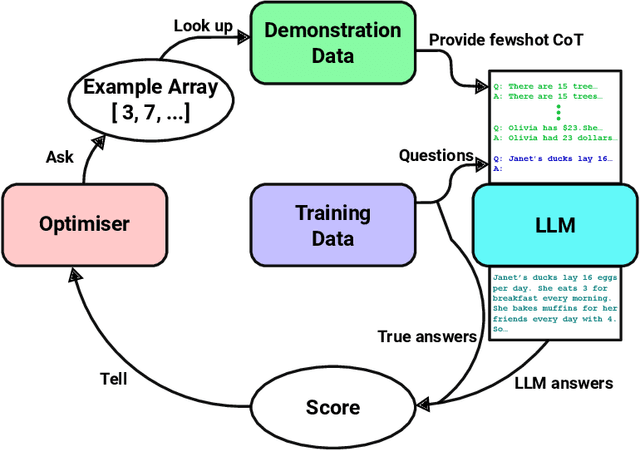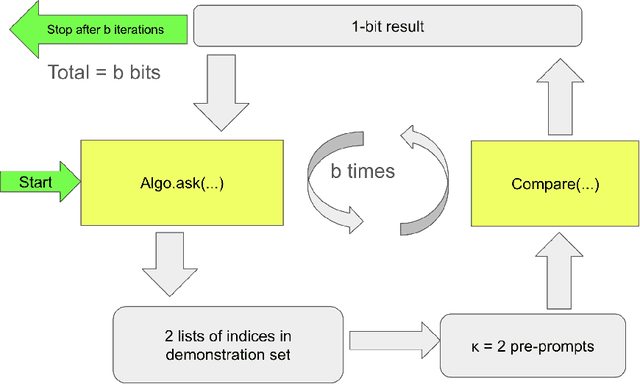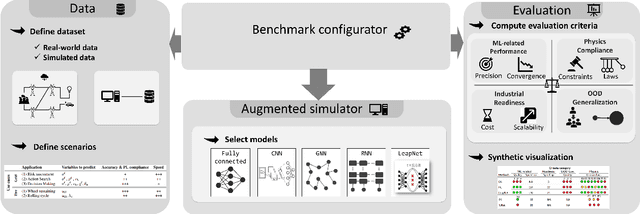Marc Schoenauer
TAU
Position: Causal Machine Learning Requires Rigorous Synthetic Experiments for Broader Adoption
Aug 12, 2025Abstract:Causal machine learning has the potential to revolutionize decision-making by combining the predictive power of machine learning algorithms with the theory of causal inference. However, these methods remain underutilized by the broader machine learning community, in part because current empirical evaluations do not permit assessment of their reliability and robustness, undermining their practical utility. Specifically, one of the principal criticisms made by the community is the extensive use of synthetic experiments. We argue, on the contrary, that synthetic experiments are essential and necessary to precisely assess and understand the capabilities of causal machine learning methods. To substantiate our position, we critically review the current evaluation practices, spotlight their shortcomings, and propose a set of principles for conducting rigorous empirical analyses with synthetic data. Adopting the proposed principles will enable comprehensive evaluations that build trust in causal machine learning methods, driving their broader adoption and impactful real-world use.
Tuning without Peeking: Provable Privacy and Generalization Bounds for LLM Post-Training
Jul 02, 2025Abstract:Gradient-based optimization is the workhorse of deep learning, offering efficient and scalable training via backpropagation. However, its reliance on large volumes of labeled data raises privacy and security concerns such as susceptibility to data poisoning attacks and the risk of overfitting. In contrast, black box optimization methods, which treat the model as an opaque function, relying solely on function evaluations to guide optimization, offer a promising alternative in scenarios where data access is restricted, adversarial risks are high, or overfitting is a concern. However, black box methods also pose significant challenges, including poor scalability to high-dimensional parameter spaces, as prevalent in large language models (LLMs), and high computational costs due to reliance on numerous model evaluations. This paper introduces BBoxER, an evolutionary black-box method for LLM post-training that induces an information bottleneck via implicit compression of the training data. Leveraging the tractability of information flow, we provide strong theoretical bounds on generalization, differential privacy, susceptibility to data poisoning attacks, and robustness to extraction attacks. BBoxER operates on top of pre-trained LLMs, offering a lightweight and modular enhancement suitable for deployment in restricted or privacy-sensitive environments, in addition to non-vacuous generalization guarantees. In experiments with LLMs, we demonstrate empirically that Retrofitting methods are able to learn, showing how a few iterations of BBoxER improve performance and generalize well on a benchmark of reasoning datasets. This positions BBoxER as an attractive add-on on top of gradient-based optimization.
From Bytes to Ideas: Language Modeling with Autoregressive U-Nets
Jun 17, 2025Abstract:Tokenization imposes a fixed granularity on the input text, freezing how a language model operates on data and how far in the future it predicts. Byte Pair Encoding (BPE) and similar schemes split text once, build a static vocabulary, and leave the model stuck with that choice. We relax this rigidity by introducing an autoregressive U-Net that learns to embed its own tokens as it trains. The network reads raw bytes, pools them into words, then pairs of words, then up to 4 words, giving it a multi-scale view of the sequence. At deeper stages, the model must predict further into the future -- anticipating the next few words rather than the next byte -- so deeper stages focus on broader semantic patterns while earlier stages handle fine details. When carefully tuning and controlling pretraining compute, shallow hierarchies tie strong BPE baselines, and deeper hierarchies have a promising trend. Because tokenization now lives inside the model, the same system can handle character-level tasks and carry knowledge across low-resource languages.
Evolutionary Pre-Prompt Optimization for Mathematical Reasoning
Dec 05, 2024



Abstract:Recent advancements have highlighted that large language models (LLMs), when given a small set of task-specific examples, demonstrate remarkable proficiency, a capability that extends to complex reasoning tasks. In particular, the combination of few-shot learning with the chain-of-thought (CoT) approach has been pivotal in steering models towards more logically consistent conclusions. This paper explores the optimization of example selection for designing effective CoT pre-prompts and shows that the choice of the optimization algorithm, typically in favor of comparison-based methods such as evolutionary computation, significantly enhances efficacy and feasibility. Specifically, thanks to a limited exploitative and overfitted optimization, Evolutionary Pre-Prompt Optimization (EPPO) brings an improvement over the naive few-shot approach exceeding 10 absolute points in exact match scores on benchmark datasets such as GSM8k and MathQA. These gains are consistent across various contexts and are further amplified when integrated with self-consistency (SC)
Mixture of Experts in Image Classification: What's the Sweet Spot?
Nov 27, 2024



Abstract:Mixture-of-Experts (MoE) models have shown promising potential for parameter-efficient scaling across various domains. However, the implementation in computer vision remains limited, and often requires large-scale datasets comprising billions of samples. In this study, we investigate the integration of MoE within computer vision models and explore various MoE configurations on open datasets. When introducing MoE layers in image classification, the best results are obtained for models with a moderate number of activated parameters per sample. However, such improvements gradually vanish when the number of parameters per sample increases.
Evolutionary Retrofitting
Oct 15, 2024Abstract:AfterLearnER (After Learning Evolutionary Retrofitting) consists in applying non-differentiable optimization, including evolutionary methods, to refine fully-trained machine learning models by optimizing a set of carefully chosen parameters or hyperparameters of the model, with respect to some actual, exact, and hence possibly non-differentiable error signal, performed on a subset of the standard validation set. The efficiency of AfterLearnER is demonstrated by tackling non-differentiable signals such as threshold-based criteria in depth sensing, the word error rate in speech re-synthesis, image quality in 3D generative adversarial networks (GANs), image generation via Latent Diffusion Models (LDM), the number of kills per life at Doom, computational accuracy or BLEU in code translation, and human appreciations in image synthesis. In some cases, this retrofitting is performed dynamically at inference time by taking into account user inputs. The advantages of AfterLearnER are its versatility (no gradient is needed), the possibility to use non-differentiable feedback including human evaluations, the limited overfitting, supported by a theoretical study and its anytime behavior. Last but not least, AfterLearnER requires only a minimal amount of feedback, i.e., a few dozens to a few hundreds of scalars, rather than the tens of thousands needed in most related published works. Compared to fine-tuning (typically using the same loss, and gradient-based optimization on a smaller but still big dataset at a fine grain), AfterLearnER uses a minimum amount of data on the real objective function without requiring differentiability.
NeurIPS 2024 ML4CFD Competition: Harnessing Machine Learning for Computational Fluid Dynamics in Airfoil Design
Jun 30, 2024Abstract:The integration of machine learning (ML) techniques for addressing intricate physics problems is increasingly recognized as a promising avenue for expediting simulations. However, assessing ML-derived physical models poses a significant challenge for their adoption within industrial contexts. This competition is designed to promote the development of innovative ML approaches for tackling physical challenges, leveraging our recently introduced unified evaluation framework known as Learning Industrial Physical Simulations (LIPS). Building upon the preliminary edition held from November 2023 to March 2024, this iteration centers on a task fundamental to a well-established physical application: airfoil design simulation, utilizing our proposed AirfRANS dataset. The competition evaluates solutions based on various criteria encompassing ML accuracy, computational efficiency, Out-Of-Distribution performance, and adherence to physical principles. Notably, this competition represents a pioneering effort in exploring ML-driven surrogate methods aimed at optimizing the trade-off between computational efficiency and accuracy in physical simulations. Hosted on the Codabench platform, the competition offers online training and evaluation for all participating solutions.
Learning Structural Causal Models through Deep Generative Models: Methods, Guarantees, and Challenges
May 08, 2024



Abstract:This paper provides a comprehensive review of deep structural causal models (DSCMs), particularly focusing on their ability to answer counterfactual queries using observational data within known causal structures. It delves into the characteristics of DSCMs by analyzing the hypotheses, guarantees, and applications inherent to the underlying deep learning components and structural causal models, fostering a finer understanding of their capabilities and limitations in addressing different counterfactual queries. Furthermore, it highlights the challenges and open questions in the field of deep structural causal modeling. It sets the stages for researchers to identify future work directions and for practitioners to get an overview in order to find out the most appropriate methods for their needs.
ML4PhySim : Machine Learning for Physical Simulations Challenge (The airfoil design)
Mar 03, 2024



Abstract:The use of machine learning (ML) techniques to solve complex physical problems has been considered recently as a promising approach. However, the evaluation of such learned physical models remains an important issue for industrial use. The aim of this competition is to encourage the development of new ML techniques to solve physical problems using a unified evaluation framework proposed recently, called Learning Industrial Physical Simulations (LIPS). We propose learning a task representing a well-known physical use case: the airfoil design simulation, using a dataset called AirfRANS. The global score calculated for each submitted solution is based on three main categories of criteria covering different aspects, namely: ML-related, Out-Of-Distribution, and physical compliance criteria. To the best of our knowledge, this is the first competition addressing the use of ML-based surrogate approaches to improve the trade-off computational cost/accuracy of physical simulation.The competition is hosted by the Codabench platform with online training and evaluation of all submitted solutions.
Multi-Level GNN Preconditioner for Solving Large Scale Problems
Feb 13, 2024



Abstract:Large-scale numerical simulations often come at the expense of daunting computations. High-Performance Computing has enhanced the process, but adapting legacy codes to leverage parallel GPU computations remains challenging. Meanwhile, Machine Learning models can harness GPU computations effectively but often struggle with generalization and accuracy. Graph Neural Networks (GNNs), in particular, are great for learning from unstructured data like meshes but are often limited to small-scale problems. Moreover, the capabilities of the trained model usually restrict the accuracy of the data-driven solution. To benefit from both worlds, this paper introduces a novel preconditioner integrating a GNN model within a multi-level Domain Decomposition framework. The proposed GNN-based preconditioner is used to enhance the efficiency of a Krylov method, resulting in a hybrid solver that can converge with any desired level of accuracy. The efficiency of the Krylov method greatly benefits from the GNN preconditioner, which is adaptable to meshes of any size and shape, is executed on GPUs, and features a multi-level approach to enforce the scalability of the entire process. Several experiments are conducted to validate the numerical behavior of the hybrid solver, and an in-depth analysis of its performance is proposed to assess its competitiveness against a C++ legacy solver.
 Add to Chrome
Add to Chrome Add to Firefox
Add to Firefox Add to Edge
Add to Edge